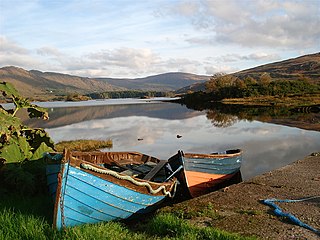
Gorey is a market town in north County Wexford, Ireland. It is bypassed by the main M11 Dublin to Wexford road. The town is also connected to the railway network along the same route. Local newspapers include the Gorey Guardian.

Kilmuckridge, formerly Ford or The Ford, is a village in County Wexford in Ireland, near the Irish Sea coast. As of the 2016 census, the village had a population of 722 people, having more than tripled in size in the 20 years since the 1996 census. It is known for the nearby beach at Morriscastle.

Athlone North, also called North Athlone, is a barony in County Roscommon, Ireland. Baronies were mainly cadastral rather than administrative units. They acquired modest local taxation and spending functions in the 19th century before being superseded by the Local Government (Ireland) Act 1898.

Athlone South, also called South Athlone, is a barony in County Roscommon, Ireland. Baronies were mainly cadastral rather than administrative units. They acquired modest local taxation and spending functions in the 19th century before being superseded by the Local Government (Ireland) Act 1898.

Castlerahan is a barony in County Cavan, Ireland. Baronies were mainly cadastral rather than administrative units. They acquired modest local taxation and spending functions in the 19th century before being superseded by the Local Government (Ireland) Act 1898.

Ibane and Barryroe is a historical barony in southern County Cork, Ireland.

Kinalea is a historical barony in central County Cork, Ireland.

Kinnatalloon is a historical barony in east County Cork, Ireland.

Kinsale is a historical barony in south County Cork, Ireland.

Shelburne is a historical barony in southwest County Wexford, Ireland.

Scarawalsh is a historical barony in northern County Wexford, Ireland.

Bantry is a historical barony in northeast County Wexford, Ireland.

East Shelmaliere, also called Shelmaliere East, is a historical barony in southwest County Wexford, Ireland.

West Shelmaliere, also called Shelmaliere West, is a historical barony in southwest County Wexford, Ireland.

Ballaghkeen South is a historical barony in southwest County Wexford, Ireland.

Ballaghkeen North is a historical barony in eastern County Wexford, Ireland.

Uppercross is a historical barony in southern County Dublin, Ireland.

Magunihy is a historical barony in eastern County Kerry, Ireland.

Iraghticonnor is a historical barony in northeastern County Kerry, Ireland.

Glanarought is a historical barony in southern County Kerry, Ireland.




















